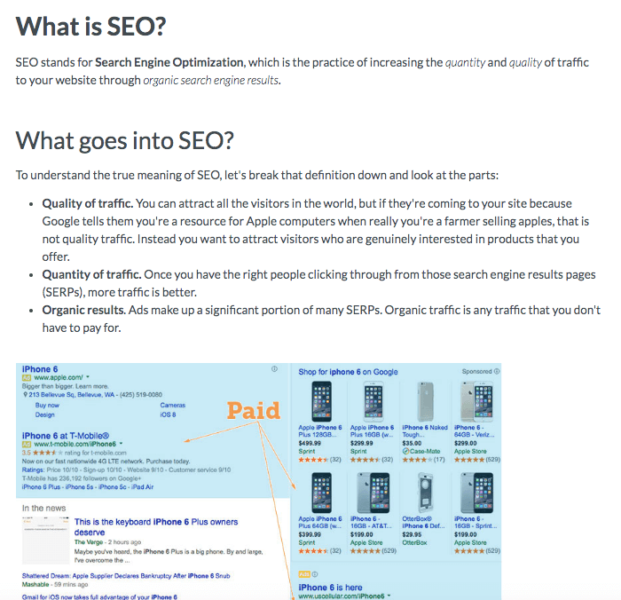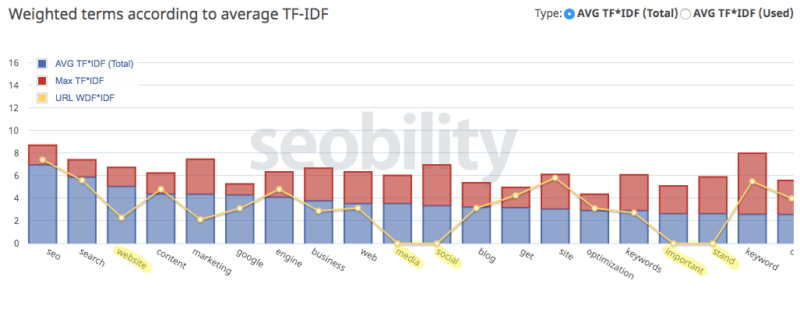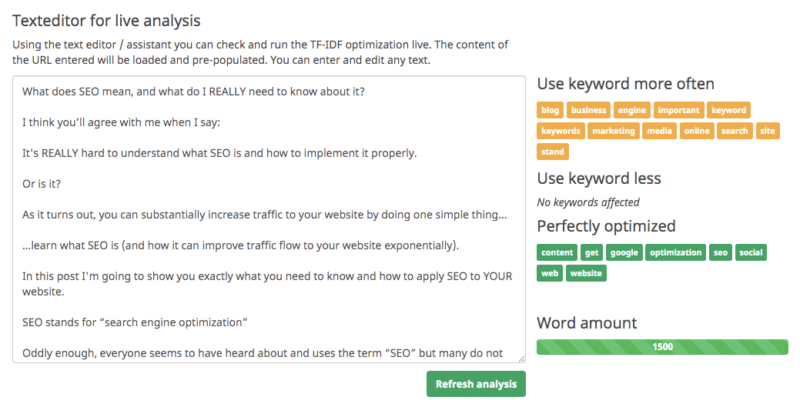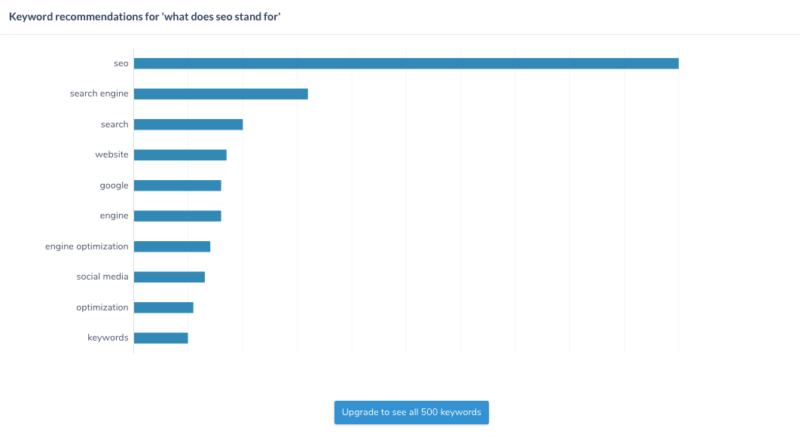TF-IDF: The best content optimization tool SEOs aren’t using
Term frequency–inverse document frequency uncovers the specific words that top-ranking pages use to give target keywords context.
TF-IDF fills in the gaps of standard keyword research. The saturation of target keywords on-page doesn’t determine relevance – anyone can practice keyword stuffing. Search marketers can use TF-IDF to uncover the specific words top-ranking pages use to give target keywords context, which may help search engines understand relevance.
Why should SEOs care about TF-IDF?
Conducting a TF-IDF analysis shows you the most important words used in the top 10 pages for a given keyword. You’ll see the exact terms that search engines consider highly relevant for your keyword and then compare your own content with competitors.
Now, I’m not suggesting you throw out your other keyword research tools—they are still very useful in the beginning stages when choosing your target keyword. However, they simply do not provide the semantic keywords necessary to fully represent a topic.
Let’s compare a keyword research tool’s semantic abilities with TF-IDF:
Keyword: ‘how to make coffee’
Say you’re writing a guide about how to make coffee. Here’s what Ahrefs would suggest including:

These tools provide excellent keyword variations but do not offer any keywords to improve topical relevance.
In the top 10 pages about how to make coffee, the most weighted words include:
- water
- cup
- brew
- filter
- beans
One glance at these words reveals the topic without a mention of the word coffee. That’s because TF-IDF provides a list of semantically related keywords, or “context” keywords, as one can think of them, that search engines are statistically expecting to see in relation to the topic of “how to make coffee.”
The exclusion of these words from an article about making coffee would absolutely indicate a lack of relevance to search engines… which means you can say goodbye to your chances of high rankings. Traditional keyword research just doesn’t provide this type of insight.
But some may ask: what about E-A-T? Won’t a good reputation be enough to override the content?
The answer is: No, not really.
In his presentation on technical content optimization, Mike King of iPullRank offers an excellent “David and Goliath” example of the importance of content relevance:
Moz, arguably one of the most relevant sites for SEO-related keywords, ranks #20 for “what does seostand for.”
Moz’s page (URL rating of 56 and 2.54k backlinks):

Alpine Web Design, the “David” in this situation, ranks #2 for the same keyword.
Alpine’s page: (URL rating of 15 and 75 backlinks)

From an authority and UX perspective, Moz is the clear winner. But TF-IDF analysis tells a different side of the story:
Moz:

Alpine:

As you can see, Moz’s page does not adequately represent many contextual keywords that Google finds relevant for the term “what does SEO stand for.” A significantly higher URL rating and backlink profile couldn’t save it.
How to implement TF-IDF with free tools
The advantages of adding TF-IDF to your content strategy are clear. Fortunately, several free tools exist to simplify this process:
Personally, this is my favorite tool. It’s the only one I’ve found that’s completely free, no download or sign-up necessary. You get three TF-IDF checks per day to start, five with free sign-up or 50 with the premium plan.
You also gain access to their text editing tool so you can optimize your content with the tool’s suggestions.

2. Ryte’s content success tool
Ryte’s TF-IDF tool is another excellent choice. You can sign up for Ryte for free and get 10 TF-IDF analyses per month, which includes keyword recommendations and topic inspiration.

This tool also includes a text editor for easy content optimization.
3. Link Assistant’s website auditor
This tool is my honorable mention because it requires downloading to gain access. Once downloaded, you should get unlimited TF-IDF analyses.
If you do decide to download, this video explains how to navigate to the TF-IDF dashboard.
Final word: TF-IDF is a tool, not the tool
It’s important to note: using TF-IDF is no substitution for having authoritative authors or reviewers, especially when it comes to YMYL topics.
This method of research should be used primarily to increase your understanding of the most weighted terms in a given document, and perhaps influence the variety of words used in your pages. It will never replace the expertise of a professional in the field.
Similarly, TF-IDF should not be taken at face value. You will be unsuccessful if you mimic the exact average of the weighted terms in your own content. Don’t force words in if they don’t make sense.
TF-IDF is just one method of content optimization, not the basket to put all your eggs in. If you get one thing out of this post, it would be to consider adding TF-IDF analysis to your toolbox when creating or updating content, not replacing your existing method of keyword research.
